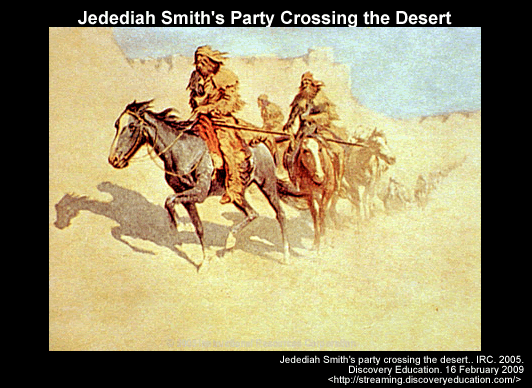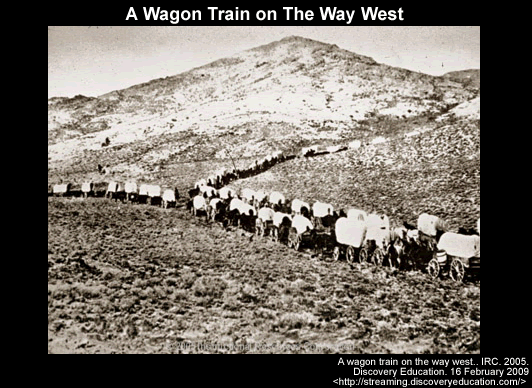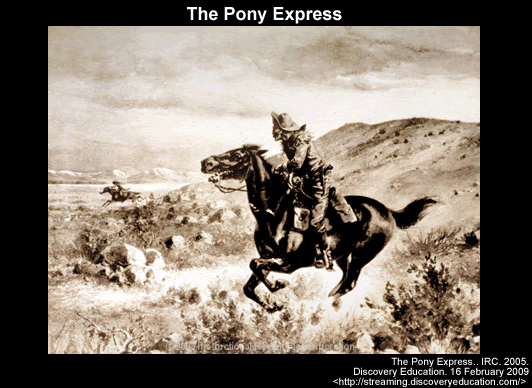Following successful completion of this lesson, students will be able to:
|
Introduction

Sacramento in 1850. Within a year, California's population jumped from 14,000 to more than 100,000. First settled in 1839, Sacramento became the state capital in 1854 after gold-seekers made it a major river port of entry into central California. (Discovery Education)
Captivated by stories of abundant land, gold, and paradise itself, pioneer families were lured westward in large numbers beginning in the 1830s. By this time, four primary trails had been carved making westward navigation much easier. The Santa Fe Trail was the primary route that led tradespersons to Santa Fe for trade with Mexico. Alternatively, the Oregon Trail led missionaries and families to the Oregon Country.

Following alongside the Oregon Trail, for much of the way, was the California Trail that led thousands of "forty-niners" to California, in 1849, to search for gold. Finally, the Mormon Trail helped Mormon families escape persecution once experienced in the Midwest to a new home in Utah.

Although the reasons for settlement varied, all the groups shared the common experiences of westward travel. Seemingly endless days and nights exposed to the elements took a toll on many families. Several contracted diseases, ran out of supplies, were delayed by harsh natural conditions related to the mountains or desert, and still others lived in fear of a possible Indian attack. Wagons certainly helped make the travel easier, but not all settlers were that fortunate. Some relied upon horses or foot to make the thousand mile journey. The perseverance and grit developed by these pioneers along their journey, created a "pioneer spirit" that helped them survive the first few years in the vastly uninhabited West.

Did You Know?
Do you know what the Pony Express was?
